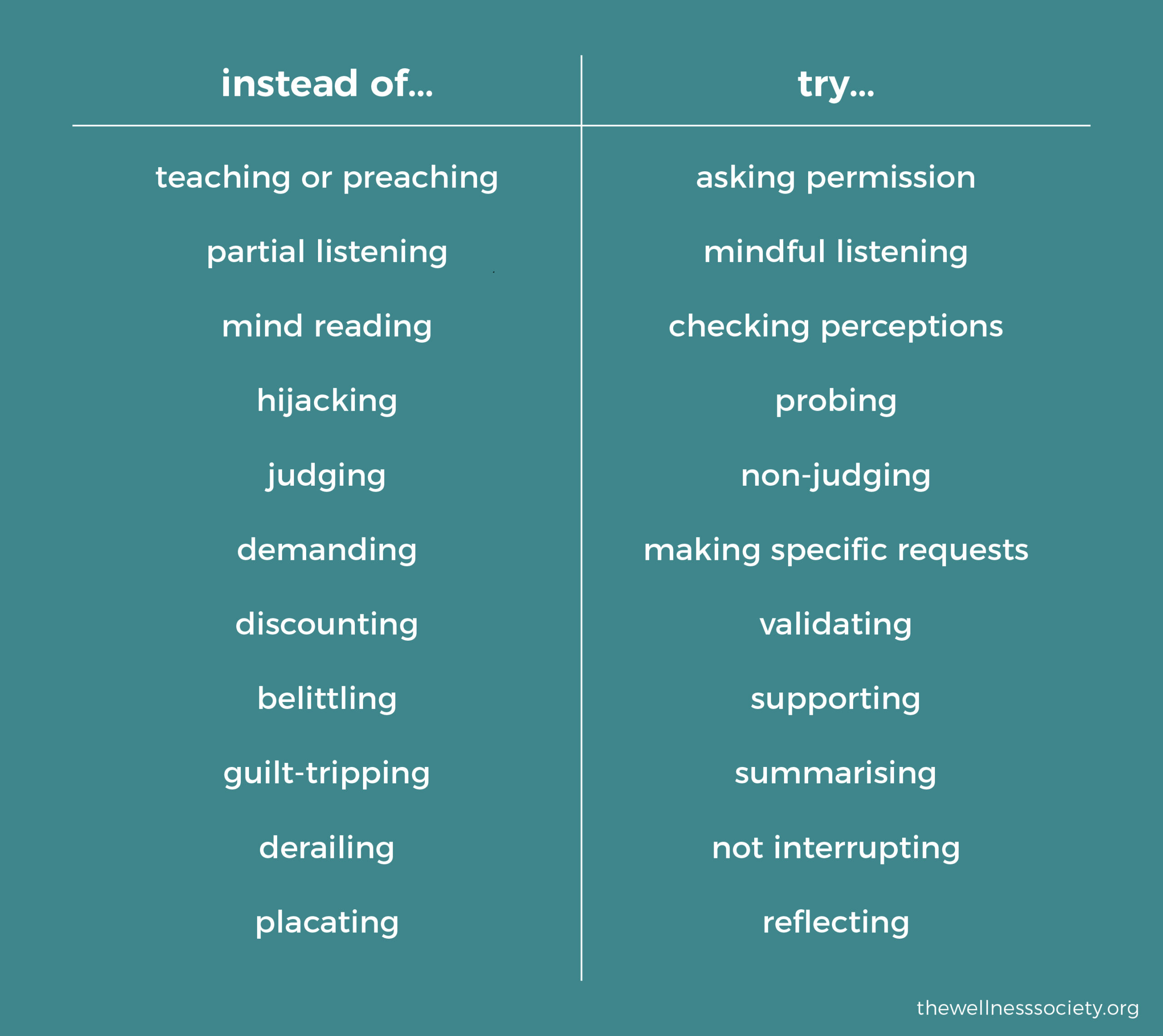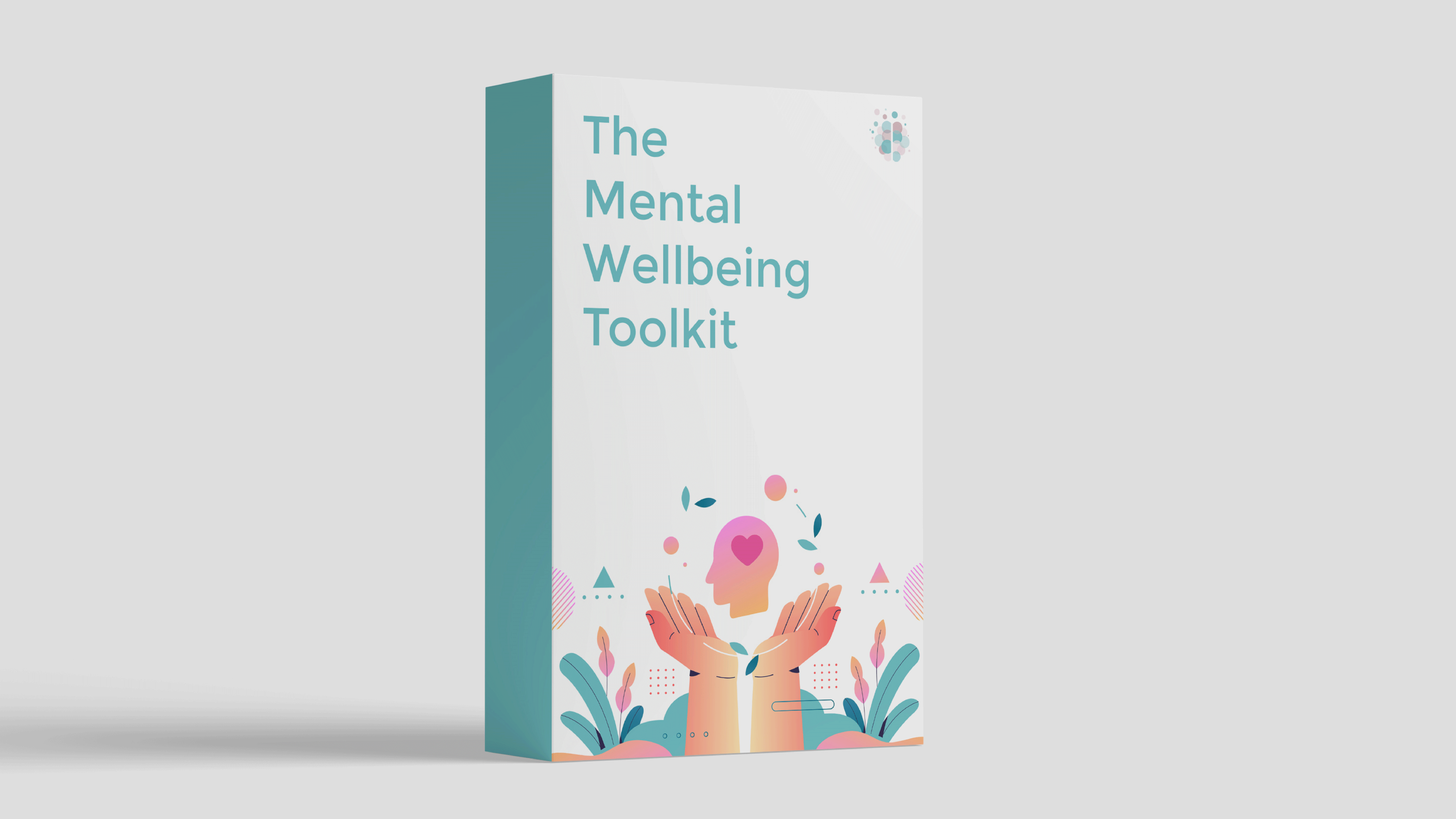“Most people do not listen with the intent to understand, they listen with the intent to reply.” – Stephen Covey
We’re a society of poor communicators. Why? Because nobody teaches us this stuff. The good news is that you’re reading this right now, and as the saying goes: If you want to change the world, start with yourself.
Poor communication habits trigger social disconnection. Become a better communicator and open yourself up to experiencing higher levels of social connection, intimacy and love.
Keep reading to discover 11 common communication pitfalls and their healthier alternatives to help you improve your communication skills in any relationship.
1. Teaching or Preaching
Teaching or preaching involves offering solutions rather than listening and seeking to understand the other person. It often includes giving unsolicited advice.
This communication habit is frequently mentioned in the context of gender communication styles. Men are often socialized to be problem-solvers, leading them to instinctively offer solutions when confronted with issues.
This approach, though well-intentioned, can frustrate women who may be seeking empathy and understanding rather than immediate fixes. Women typically value emotional support and validation, and the tendency to offer solutions can make them feel unheard.
Understanding this difference in communication styles can help both men and women navigate conversations more effectively.
Example
“Oh, my sister experienced the exact same thing. You should…” This cuts off the other person’s opportunity to fully express themselves and can come across as dismissive.
Helpful Alternative: Asking Permission
Resist entering ‘fix mode’ and focus on mindful listening. When you’re confident that you’ve given the person enough time to fully express themselves and come up with their own solutions, you could ask their permission to give your advice.
Example
“Can I tell you what I’d do in this situation?” This shows respect for the other person’s autonomy and encourages them to explore their own solutions first.
2. Partial Listening
Partial listening occurs when you split your attention between the speaker and other distractions, such as your phone or other tasks. This behaviour can lead to misunderstandings and make the other person feel undervalued.
Example
Speaker A tries to communicate with Speaker B, who continues to send an email on their phone while also attempting to listen. Speaker A feels frustrated and unimportant, leading to a breakdown in communication.
Helpful Alternative: Mindful Listening
Mindful listening involves giving the speaker your full attention. This means removing distractions and redirecting your attention to what the speaker is saying. Pausing your tasks allows you to be fully present in the conversation.
Example
Both speakers put their phones in their bags while communicating. Speaker A feels heard and valued, leading to a more meaningful conversation.
3. Mind Reading
Mind reading involves assuming you know exactly what the other person is feeling or thinking without asking them directly. It's an example of a cognitive distortion in the cognitive behavioural therapy (CBT) framework (download a free cognitive disortions worksheet here).
Mind reading can lead to misinterpretations and unnecessary conflicts.
It's particularly prominent in people with an anxious attachment style as they tend to have a heightened sensitivity to the emotional states of others. They often seek validation and reassurance in relationships and engage in mind reading as a way to anticipate potential rejection.
It may stem from what we refer to as "story distortions" in The Thinking Slow Method. Specifically, ''The Unworthy Story''.
Story distortions are often rooted in past relational trauma. For that reason, they're deeply ingrained and mostly arise in social situations. They often feel very compelling and trigger intense challenging emotions.
Example
“I can tell you’re having second thoughts.” This assumption can lead to unnecessary conflict.
Helpful Alternative: Checking Perceptions
Checking perceptions means asking clarifying and probing questions to find out if your interpretations are accurate.
Example
“I noticed you changed the subject pretty quickly. Could you tell me what you’re thinking?”
4. Hijacking
Hijacking a conversation means redirecting the focus onto yourself instead of allowing the other person to fully express themselves.
It shows limited interest in the other person’s experiences and feelings.
Example
“Oh yeah – I’m having trouble with my boss as well at the moment…” This shifts the focus away from Speaker A’s concerns and onto Speaker B’s experiences, making Speaker A feel ignored.
Helpful Alternative: Probing
Probing involves asking questions to improve your understanding of what the other person is thinking, feeling, and needing. Show that you can relate to what the person is saying after they've had the opportunity to express themselves first.
Example
“You’re having trouble with your boss? How come?” This question allows Speaker A to fully express their concerns before Speaker B shares their own experiences.
5. Judging
Judging involves evaluating the other person and what they’re saying rather than mindfully listening to them. It includes projecting your own values and beliefs onto others.
Example
Labelling someone as selfish after something they’ve said to you. You then follow your thought trail around this instead of listening to them. You may feel dislike towards people if they don't share the same values and beliefs as you.
Helpful Alternative: Non-Judging
Non-judging means being open-minded, curious, and accepting that everyone is different. It’s one of the core attitudes of mindfulness practice.
Honour the fact that we all have a right to our own opinions, values, and beliefs, and that these are a result of our unique experiences and psychology.
Example
Listening without forming immediate judgements and being curious about the other person’s perspective. Asking questions like, “What makes you feel that way?” or “Can you help me understand your point of view?” to lead to a deeper understanding.
6. Demanding
Demanding involves making demands instead of respectfully asking for what you want. It can come off as aggressive and inconsiderate.
Example
“Get your room cleaned now!” This approach is authoritarian and can lead to resistance and conflict.
Helpful Alternative: Making Specific Requests
Ask someone to do something only if they’re willing to, rather than demanding something from them.
Example
“I’m feeling really frustrated about this. Would you be willing to clean your room now please?” This approach is respectful and acknowledges the other person’s willingness to help.
Interested in Non-Violent Communication Worksheets (NVC)? Be sure to check out The Mental Wellbeing Toolkit.
7. Discounting
Discounting means giving the message that the other person’s opinions, feelings, and needs don’t matter – it can be dismissive and invalidating.
Example
“That’s not true! I never take you for granted.” This response dismisses the other person’s feelings and shuts down further communication.
Helpful Alternative: Validating
Validate the other person by communicating in a way that shows you’re taking their opinions, feelings, and needs into account.
Example
“It’s understandable that you feel like that considering the situation you’re in...” This response acknowledges and respects the other person’s feelings, encouraging further discussion and resolution.
8. Belittling
Belittling gives the message that the other person should feel foolish for having a particular feeling, need, or opinion. It can undermine their self-esteem and trust in the relationship.
Example
"Wow, I can't believe you actually think that!" This comment belittles the other person’s opinion and makes them feel invalidated.
Helpful Alternative: Supporting
Supporting involves demonstrating acceptance, warmth, and care to the other person.
Example
“Okay, I'd be interested to know more about how you came to that opinion?” This response shows genuine interest and respect for the other person’s perspective.
9. Guilt-Tripping
Guilt-tripping involves giving the message that the other person is behaving immorally or is in the wrong for having certain needs. It can create feelings of shame and resentment.
Example
“If you don’t trust me, then what’s the point? It tells me there’s something very wrong with our relationship.” This statement induces guilt and shifts the focus away from the real issue.
Helpful Alternative: Summarising
Summarising involves repeating what you’ve heard back to the speaker in a brief way to ensure you’ve understood them properly.
Example
“So you’ve been feeling anxious because you haven’t been hearing from me as much when I’m away?” This shows that you're listening and trying to understand their feelings, paving the way for a constructive conversation.
10. Derailing
Derailing shifts the attention from the other person’s feelings to your own to stop them from carrying on with what they were saying. This interrupts their thought process and invalidates their feelings.
Example
“I can’t believe you’d say that – you’ve really hurt me.” This response shifts the focus to your own feelings instead of addressing the other person’s concerns.
Helpful Alternative: Not Interrupting
Giving the person time to think and express themselves fully without interruption.
Example
Waiting for a few seconds without filling the pauses to allow the other person to think and finish what they’re saying. This patience shows respect and allows the other person to fully articulate their thoughts and feelings.
11. Placating
Placating involves agreeing with someone without really listening or providing the opportunity for them to fully express themselves. It can come off as insincere and dismissive.
Example
“I know, you’re right – it won’t happen again okay?” This response avoids addressing the underlying issue and cuts off further communication.
Helpful Alternative: Reflecting
Reflecting involves repeating someone’s words back to them exactly to demonstrate that you’re listening and to move the conversation forward.
Example
- Speaker A: “To be honest, I was really disappointed that you forgot about it.”
- Speaker B: “You were disappointed I forgot…”
- Speaker A: “Yep, I was counting on having you there with me.”
Reflecting shows that you’re actively listening and encourages the other person to continue expressing their feelings, leading to a deeper understanding and resolution of the issue.
Summary
Effective communication is crucial in relationships. Here’s an overview of the common pitfalls we outlined, as well as their more helpful alternatives.

These habits and attitudes lead to a deeper connection and a more productive dialogue in any relationship.
Interested in Communication Skills Worksheets?
If you’re interested in a self-guided program that includes tools from NVC, DBT, CBT, ACT and more, be sure to check out The Mental Wellbeing Toolkit. It's "like 10 therapy sessions in one."




